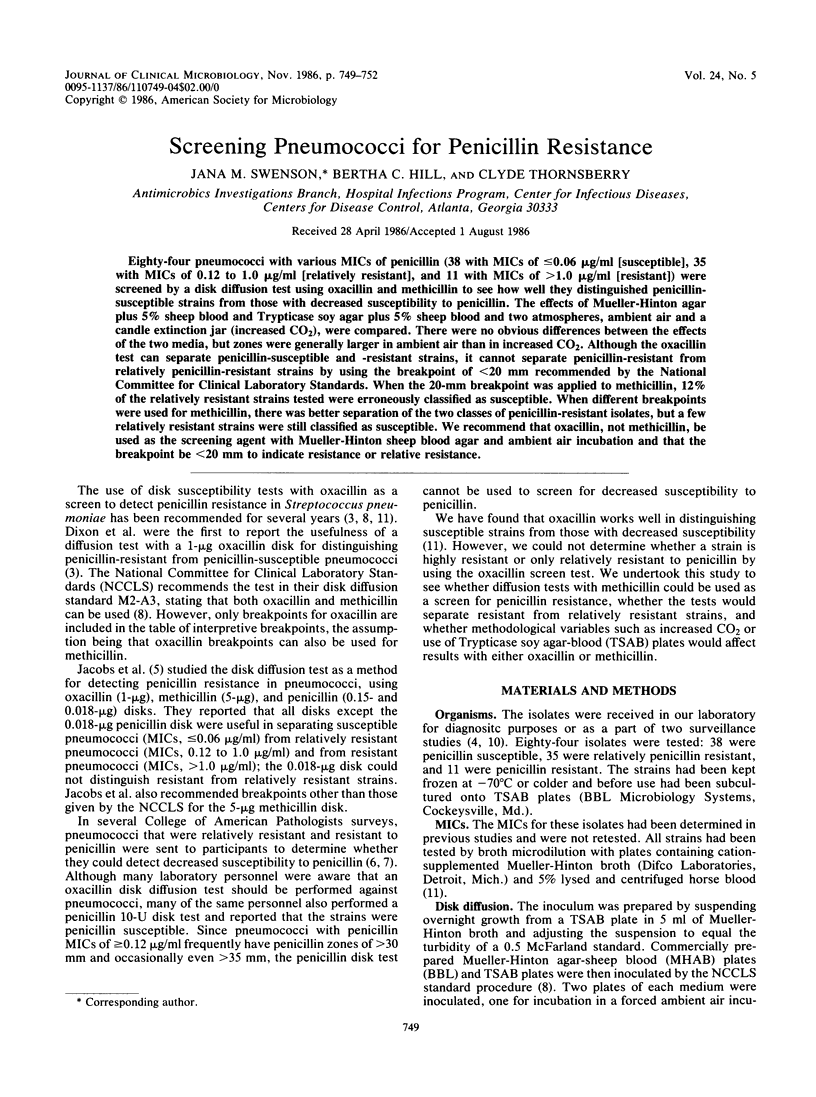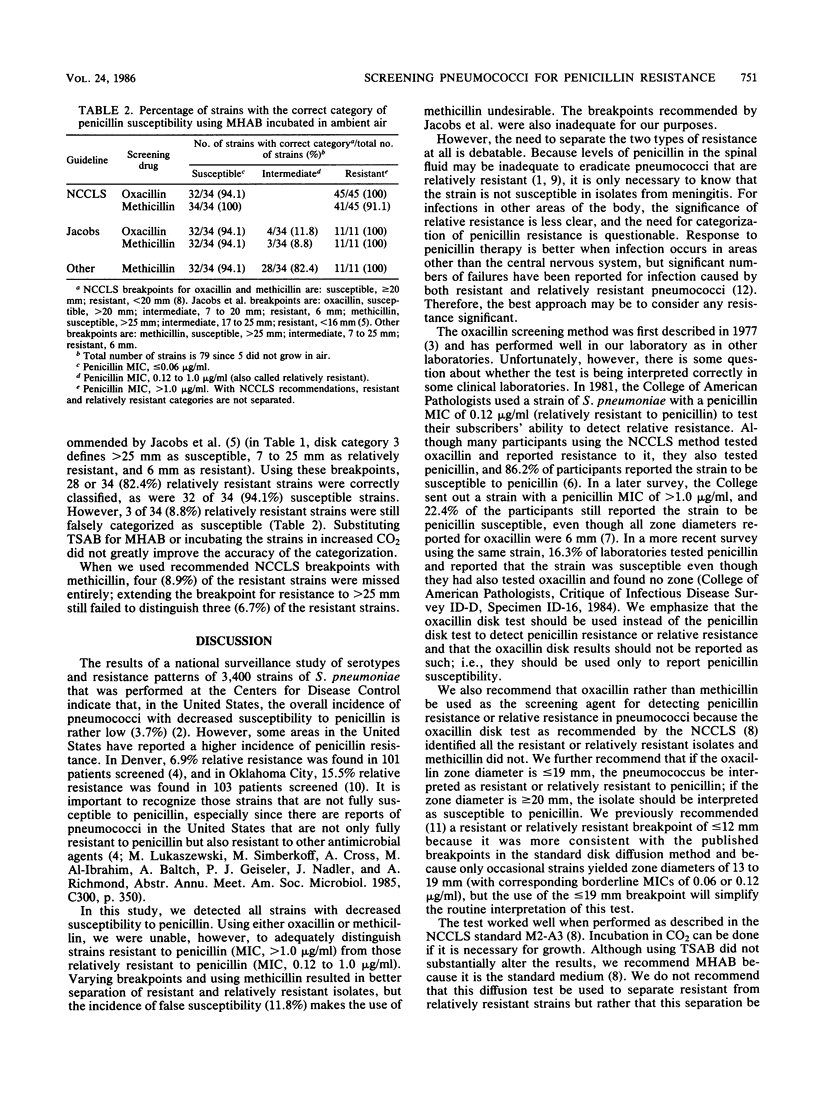Abstract
Eighty-four pneumococci with various MICs of penicillin (38 with MICs of less than or equal to 0.06 micrograms/ml [susceptible], 35 with MICs of 0.12 to 1.0 micrograms/ml [relatively resistant], and 11 with MICs of greater than 1.0 micrograms/ml [resistant] ) were screened by a disk diffusion test using oxacillin and methicillin to see how well they distinguished penicillin-susceptible strains from those with decreased susceptibility to penicillin. The effects of Mueller-Hinton agar plus 5% sheep blood and Trypticase soy agar plus 5% sheep blood and two atmospheres, ambient air and a candle extinction jar (increased CO2), were compared. There were no obvious differences between the effects of the two media, but zones were generally larger in ambient air than in increased CO2. Although the oxacillin test can separate penicillin-susceptible and -resistant strains, it cannot separate penicillin-resistant from relatively penicillin-resistant strains by using the breakpoint of less than 20 mm recommended by the National Committee for Clinical Laboratory Standards. When the 20-mm breakpoint was applied to methicillin, 12% of the relatively resistant strains tested were erroneously classified as susceptible. When different breakpoints were used for methicillin, there was better separation of the two classes of penicillin-resistant isolates, but a few relatively resistant strains were still classified as susceptible. We recommend that oxacillin, not methicillin, be used as the screening agent with Mueller-Hinton sheep blood agar and ambient air incubation and that the breakpoint be less than 20 mm to indicate resistance or relative resistance.
Full text
PDF



Selected References
These references are in PubMed. This may not be the complete list of references from this article.
- Ahronheim G. A., Reich B., Marks M. I. Penicillin-insensitive pneumococci. Case report and review. Am J Dis Child. 1979 Feb;133(2):187–191. doi: 10.1001/archpedi.1979.02130020079017. [DOI] [PubMed] [Google Scholar]
- Dixon J. M., Lipinski A. E., Graham M. E. Detection and prevalence of pneumococci with increased resistance to penicillin. Can Med Assoc J. 1977 Nov 19;117(10):1159–1161. [PMC free article] [PubMed] [Google Scholar]
- Istre G. R., Humphreys J. T., Albrecht K. D., Thornsberry C., Swenson J. M., Hopkins R. S. Chloramphenicol and penicillin resistance in pneumococci isolated from blood and cerebrospinal fluid: a prevalence study in metropolitan Denver. J Clin Microbiol. 1983 Mar;17(3):472–475. doi: 10.1128/jcm.17.3.472-475.1983. [DOI] [PMC free article] [PubMed] [Google Scholar]
- Jacobs M. R., Gaspar M. N., Robins-Browne R. M., Koornhof H. J. Antimicrobial susceptibility testing of pneumococci. 2. Determination of optimal disc diffusion test for detection of penicillin G resistance. J Antimicrob Chemother. 1980 Jan;6(1):53–64. doi: 10.1093/jac/6.1.53. [DOI] [PubMed] [Google Scholar]
- Jones R. N., Edson D. C. Special topics in antimicrobial susceptibility testing: test accuracy against methicillin-resistant Staphylococcus aureus, pneumococci, and the sensitivity of beta-lactamase methods. Am J Clin Pathol. 1983 Oct;80(4 Suppl):609–614. [PubMed] [Google Scholar]
- Jones R. N., Edson D. C. The ability of participant laboratories to detect penicillin-resistant Pneumococci. A report from the microbiology portion of the College of American Pathologists (CAP) surveys. Am J Clin Pathol. 1982 Oct;78(4 Suppl):659–663. [PubMed] [Google Scholar]
- Paredes A., Taber L. H., Yow M. D., Clark D., Nathan W. Prolonged pneumococcal meningitis due to an organism with increased resistance to penicillin. Pediatrics. 1976 Sep;58(3):378–381. [PubMed] [Google Scholar]
- Ward J. Antibiotic-resistant Streptococcus pneumoniae: clinical and epidemiologic aspects. Rev Infect Dis. 1981 Mar-Apr;3(2):254–266. doi: 10.1093/clinids/3.2.254. [DOI] [PubMed] [Google Scholar]


